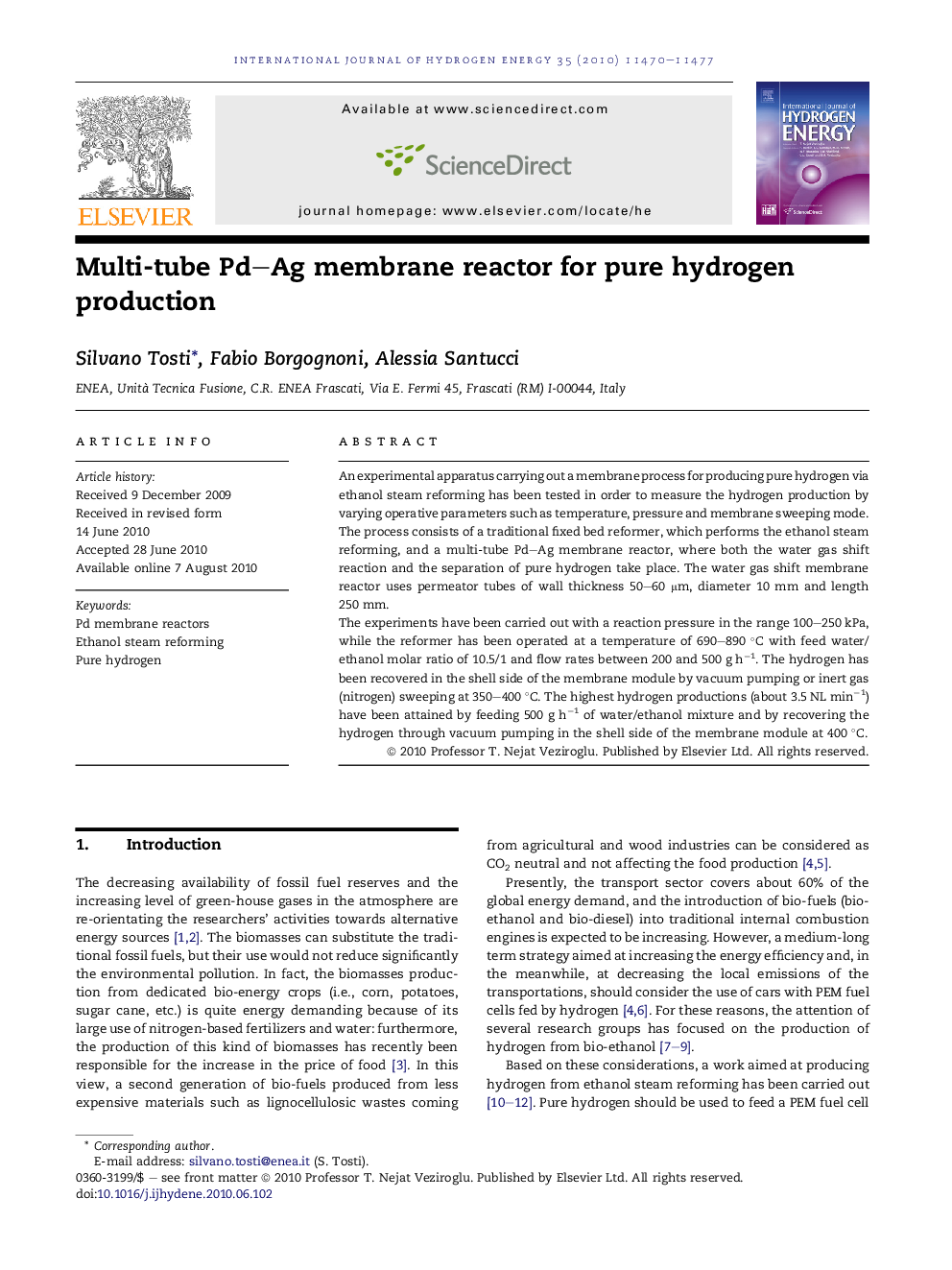| Article ID | Journal | Published Year | Pages | File Type |
|---|---|---|---|---|
| 1276749 | International Journal of Hydrogen Energy | 2010 | 8 Pages |
An experimental apparatus carrying out a membrane process for producing pure hydrogen via ethanol steam reforming has been tested in order to measure the hydrogen production by varying operative parameters such as temperature, pressure and membrane sweeping mode.The process consists of a traditional fixed bed reformer, which performs the ethanol steam reforming, and a multi-tube Pd–Ag membrane reactor, where both the water gas shift reaction and the separation of pure hydrogen take place. The water gas shift membrane reactor uses permeator tubes of wall thickness 50–60 μm, diameter 10 mm and length 250 mm.The experiments have been carried out with a reaction pressure in the range 100–250 kPa, while the reformer has been operated at a temperature of 690–890 °C with feed water/ethanol molar ratio of 10.5/1 and flow rates between 200 and 500 g h−1. The hydrogen has been recovered in the shell side of the membrane module by vacuum pumping or inert gas (nitrogen) sweeping at 350–400 °C. The highest hydrogen productions (about 3.5 NL min−1) have been attained by feeding 500 g h−1 of water/ethanol mixture and by recovering the hydrogen through vacuum pumping in the shell side of the membrane module at 400 °C.
